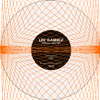[PAN]
Given the cyclical nature of dance music, it only seems natural that jungle, one of the UK’s most distinctive sounds, should experience a resurgence in the way acid and American house have. But it hasn’t, and the title of Diversions 1994–1996 might lend some clues as to why. Though offshoot drum and bass has mined the same rhythm for over a decade to exponentially diminishing returns, jungle burst onto the UK landscape soon after hardcore and, over the course of the two years in this record’s title, provided an explosive jolt to dance music the likes of which we’re still reeling from. Chucking out drum machines and instead sampling and chopping up breaks, a new rhythmic paradigm emerged far from the straight laced 4/4 chug that dance music had previously offered (not to overlook the fact that suddenly subs were attacking you as opposed to gently nudging you to move). But a sound so distinct, so tied to a specific time (mid 90s) and place (London, the Blue Note) is almost impossible to revive without feeling like some cheap imitation.
So Lee Gamble doesn’t even attempt to revive it — not sonically, anyway. Instead, he, like Source Direct and Dillinja before him, resorts to samples for Diversions 1994–1996, but this time the samples are of old jungle mixtapes. While he doesn’t emerge with something totally game-changing like jungle was (the record recalls soundscapes heard on PAN, Spectrum Spools, and others recently), Gamble does create a kind of parallel universe where dance music is meant to be consumed horizontally. Some comparisons are inevitable: Mark Leckey’s found footage opus “Fiorucci Made Me Hardcore” provides a visual analog to Gamble’s work, while the post-rave come down of Burial mines a similar nostalgic vibe. Diversions 1994–1996 eschews the more academic flourishes of the former and the wistful melancholia of the latter to hit harder than both, with the low-end a constant, overpowering presence, and the druggy haze of memory leading the record’s sounds and ideas to bleed seamlessly into each other.
The vinyl has distinct tracks, but its somewhat pointless to go into them individually — better to take the record as a whole and let it wash over you, with each memory of what jungle might have sounded like (but most assuredly didn’t) passing in and out of frame. Near the end, the picture starts to become clearer, with “Dollis Hill” looping a slowed-down jungle beat (in a way that jungle was rarely looped) that’s soon overcome by the euphoric melodies and voices of “Rufige” and eventually clobbered back into memory by jabbing saw-tooth waves. It’s somewhat rare to find a record so firmly attached to a single concept, but Diversions 1994–1996 approaches a subject that resonates with almost all club-goers from a fresh perspective, and is likely to stick in listeners’ minds as much as those jungle cassettes and nights at the Blue Note did in Lee Gamble’s.
















Interesting, I will look into buying the vinyl.
The Blue Note was the not the be all and end all of jungle and I think it’s a mistake to reference it as the place that is so ‘specifically’ jungle – jungle was a nationwide phenomenon from the early days, especially in the big cities of the North and Bristol. And within London it was everywhere. Pirate radio is the most obvious specificity of early jungle, not any single club.